Have you ever wondered about Animals with Long Tongue, the Purpose of a Long Tongue? If so, Now, you are curious to know about them. Right!
In this Article, We shall look at Animals with Long Tongues that are all chosen from across the world along with the purpose of a long tongue.
Table of Contents
Animals With Long Tongue :
Giraffe

The giraffe is the largest ruminant that belongs to Genus Giraffa, Family Giraffidae, and is found in East Africa, Southern Africa, and other places.
Giraffes not only have a long neck, and long legs but also possess a long tongue about 20 inches in length and is prehensile in nature that can grasp the distant leaves while passing through the thorns in the branches. Interestingly, Its tongue has a dark blue-pink color that protects against sunburn, while it is also covered by thick papillae to give protection against vicious thorns.
The combination of the prehensile tongue with thick papillae, saliva, and prehensile lips, useful in grasping and foraging the distantly located foliages while passing through the thorn.
Tube-Lipped Nectar Bat

A tube-lipped nectar bat is a bat with a long tongue that belongs to Genus Anoura, Family Phyllostomidae, and is found in Ecuador, South America, and other places.
A striking feature about this tube-lipped nectar bat, is they have a really long tongue about 3.3 inches in length while its body measures about 2.2 inches. So if we compare them to humans with respect to the length of their tongue to its body then humans would have about 9 feet of the tongue- so that’s a really long tongue.
Therefore, Among mammals, It has the longest tongue in the world relative to their body length.
Chameleon

The Chameleon is a lizard that belongs to Family Chamaeleonidae, Order Squamata, and is found in Africa, Madagascar, southern Europe, Spain, Italy, Southern India, and Sri Lanka.
One of the amazing features of the Chameleon is it has a long tongue that is adapted to catch the distantly located prey within about 0.07 seconds as they are capable of ballistically projecting them.
Surprisingly, they can project or shoot their tongues towards their prey with pinpoint accuracy while the sticky substance located on the tip of their tongue can hold the prey firmly. These tongues are longer than their own body length when measured excluding tail length. Thus, Its tongue can be more than one and half times larger than their bodies.
Interestingly, Even the smaller chameleon has a longer tongue, about twice the length of their bodies excluding their tail length.
Pangolin

The Pangolins, also known as scaly anteaters, is the only mammal with scales that belongs to Order Pholidota, Class Mammalia, and is found in Asia, Africa, and other places.
They have a long tongue, about 40 cm in length that is longer than their own bodies measured from head to body, that are covered by sticky saliva to stick. Its long tongue is adapted for finding the distantly located insects inside the ant and termite nests.
Surprising fact about Pangolins is that they don’t have teeth to chew their food.
Gerenuk
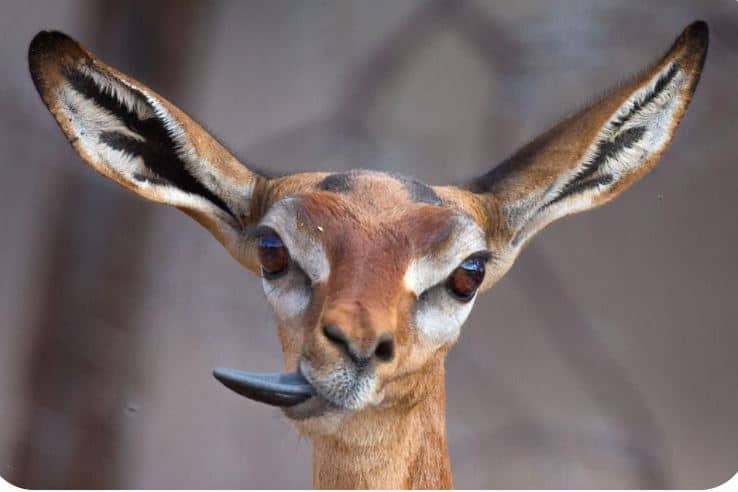
A gerenuk, also known as the giraffe gazelle, Waller’s gazelle, is an antelope species that belongs to Genus Litocranius, Family Bovidae, and is found in the Horn of Africa, East Africa.
These cute-looking antelopes have a long tongue that can pass through the thorns of acacias to pick the fresh leaves. They are able to stand on their hindlimbs to reach the distantly located foliages of trees.
The combination of snout, long upper lip, and a thick tongue enable them to feed on the leaves of acacia trees.
Eurasian wryneck

A Eurasian wryneck, also known as northern wryneck is a bird that belongs to the same family to which the woodpecker also belongs. Thus, this bird belongs to Genus Jynx, Family Picidae, and is found in Europe, Asia, Africa, southern Asia, Iran, northwestern Africa.
They have a long tongue that is sticky and tubular, an adaptation to capture the insects from the soil. Its tongue can reach around 3.5 inches in length and contains fissures that aid in finding and eating the prey, insects, and their larvae, hidden inside the bark of a tree.
Similar to those woodpeckers, wryneck possess large heads with long tongues that aid in extracting the prey present in the soil as well as in the barks.
long-beaked echidna

The long-beaked echidna is a spiny monotreme that belongs to Genus Zaglossus, Family Tachyglossidae, and is found in New Guinea, Australia, Tasmania, and King Island.
Apart from its long beak, It has a long tongue about 7 inches in length, which is covered by sticky substances that aid in sticking the prey to its tongue. They find prey such as ants, worms, and insect larvae, inside the anthill and termite nests by inserting its long and sticky tongues.
Surprisingly, They are toothless mammals and as a result they can’t chew their food. However, they are able to break rotting logs through their claws in order to find the hidden prey.
Blue Whale

A blue whale is a sea mammal that belongs to Genus Balaenoptera, Family Balaenopteridae, and is found in all oceans except the Arctic.
As a large animal on the earth, It also has a large tongue that weighs as much as the weight of an elephant. Surprisingly, they feed on small-sized creatures called the krill but in a large quantity.
They swallow the school of krill and inverts the tongue to make a sac to squeeze the water out in order to engulf a large volume of krills at a time.
Green Woodpecker
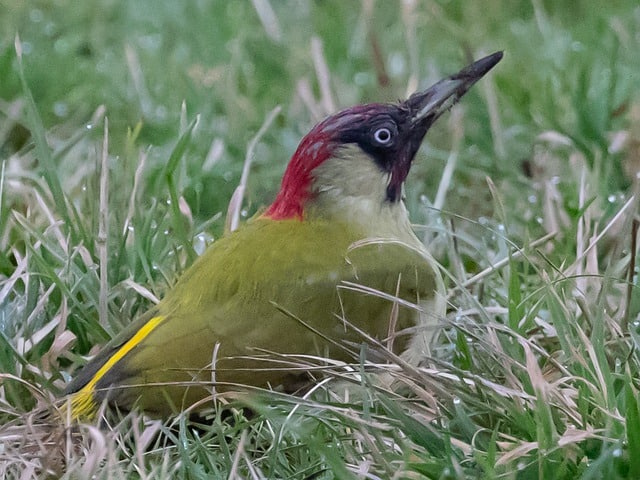
A green woodpecker, including European green woodpecker, Iberian green woodpecker, Japanese green woodpecker, is a species of green woodpecker that belongs to Genus Picus, Family Picidae, and is found in England, and other places.
They have a remarkably long tongue about 4 inches in length that can be wrapped or coiled on the back of their head. These long tongues are sticky in nature due to the salivary secretions from the enlarged salivary glands that aid in sticking of prey.
Its extraordinary tongue measures about 30 percent of its body length and is able to catch ants and insects hidden in the soil and bark of a tree.
Giant Anteater
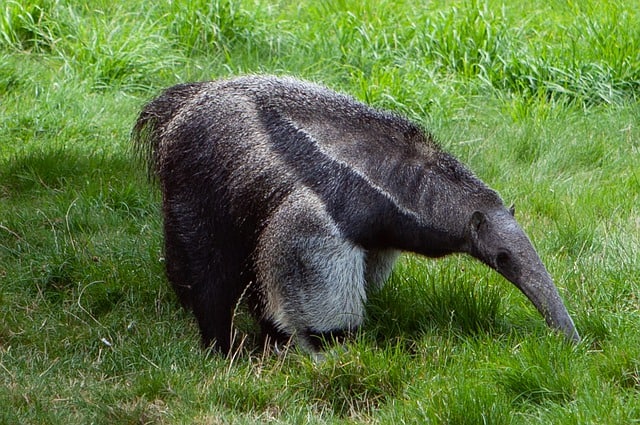
A giant anteater, also known as the ant bear, is an insectivorous animal that belongs to Genus Myrmecophaga, Family Myrmecophagidae, and is found in Central and South America and other regions.
One of the amazing features of these animals is its tongue that is very long, about 24 inches in length, covered by sticky saliva that is sticky to catch prey, especially the ants and termites that they eat all day and is the only primary food for them. As a result, they can eat as much as about 30,000 ants and termites each day.
Its remarkably long tongues make them the mammals with the longest tongue in relation to their body size. Its long tongue is an adaptation to find the prey that is hidden in the ant and termite hills.
Giant Palm Salamander
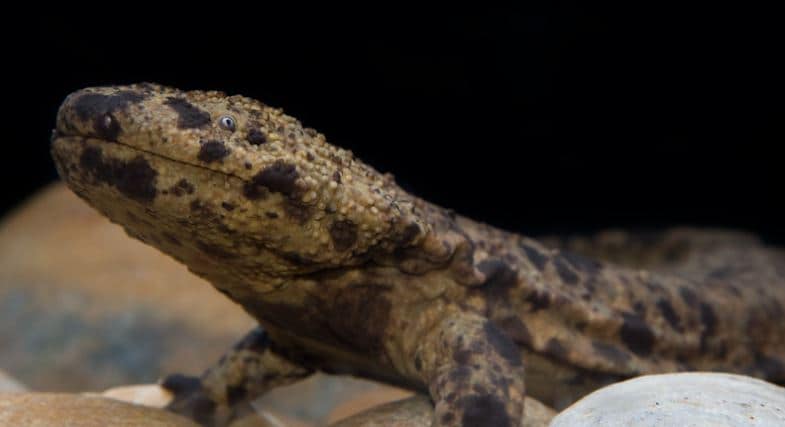
A giant palm salamander is an amphibian that belongs to Class Amphibia and is found in wet forest, under logs, and other moist habitats.
One of the noticeable morphological features of this salamander is they have powerful tongues that are long as well, about 2 inches in length. Its tongue is located on the floor of its mouth.
A special feature about its tongue is its launching speed that is required for catching its prey effectively.
Read More: Animals With Big Cute Ears !
Sun Bear

The sun bear, also called Malayan sun bears, is a mammal that belongs to Genus Helarctos, Family Ursidae, and is found in Southeast Asia, Southern China, Eastern India, and Indonesia.
One can notice their long tongue that is about 10 inches in length, that are pink in color, and can be used to find the insects in the narrow and tight spaces, and also used to feed on honey from beehives.
Surprisingly, Its long tongue enables them to slurp up insects and honey using its extra-long tongue.
Okapi
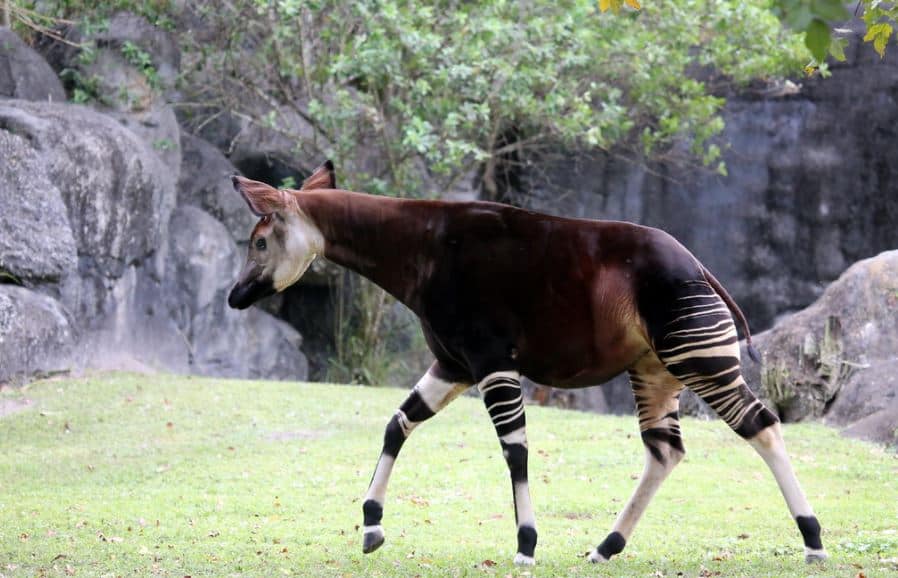
An okapi, also known as the forest giraffe, Congolese giraffe, or zebra giraffe, is a herbivorous mammal that belongs to Genus Okapia, Family Giraffidae, and is found in Democratic Republic of Congo, central Africa, and other places.
They have a long tongue, about 16 inches in length, that are prehensile in nature to strip the distantly located leaves and foliages from branches and vines. Its tongue is black-dark blue in color to protect against the sunburn and thick to protect against the thorn of the branches while passing through them.
Surprisingly, Its tongue is so long that it can be used to clean their eyes and ears frequently.
Sword-Billed Hummingbird

The sword-billed hummingbird is a species of hummingbird that belongs to Genus Ensifera, Family Trochilidae, and is found in Bolivia, Colombia, Ecuador, Peru, Venezuela, and South America.
One of the striking features of these birds is not only their long beaks but also their long tongue that seems unusually long. The combination of long beak and long tongue is an adaptation of these hummingbirds to feed on nectars of flowers that are usually inaccessible to other birds.
The long nectar-feeding tongue is protected inside its beaks. Whereas, Its beak is black in color, tubular in shape, and slightly curved upwards.
Dog

The dogs have a long tongue that is usually set out of their mouths. However, The snubbed nose dog breeds have a long tongue as it is usually set outside of their mouths.
There are records of dogs with long tongues, such as a boxer female dog with a tongue length of about 17-inch in length, and a Saint Bernard with a long tongue that measures about 7.3 inches.
